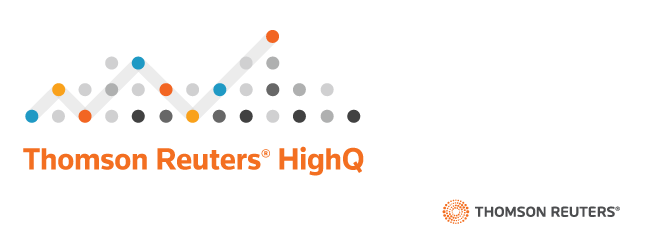Task Management Technology Keeps Teams Focused, Organized

Innovative law firms and legal departments continue to seek the optimal method to more efficiently and intelligently plan, organize, track and complete work.
Project and task management tools within Thomson Reuters HighQ allow legal professionals to stay focused on important assignments and not the minutiae of documenting progress.
HighQ provides a quick overview of project activity to support a lean, agile approach and helps teams better plan for deadlines, set expectations and work within budget. The tools enable team members to create lists with due dates, status, priority, links, comments and reminders, streamlining task management and keeping everyone organized. With a high-level view of casework streams and project progress, team members can drill down into task timelines, details and status.
It’s designed to help teams avoid the bottlenecks, communication breakdowns and other obstacles that can threaten the efficiency of legal work and easily adapt to unforeseen changes in scope, budget and timelines.
“HighQ has made the business of project management much more flexible for everybody, as the system allows you to manage separate streams of a project, or different projects, in several parts of an organization simultaneously – and with the transparency of all sides easily able to see what needs to happen next on a deal at any time,” said Ali Brown, project manager at Stevens & Bolton LLP.
Whether working on multiple complex projects or a small one, HighQ keeps groups on task by:
- Tracking activities — All tasks are visible within the team’s site and the task boards provide a simple overview on the status of one’s own tasks, as well as those of colleagues and teams as a whole.
- All relevant information in one location — Files, comments and instructions can be attached to tasks as well as linked to other resources, ensuring that everything is accessible to complete the task.
- Bundling communications — Project teams can comment on individual tasks to provide progress updates, offer insights, ask questions or include links to complete the task, eliminating multiple email threads.
- Prioritizing actions — Tasks are organized by due date making it easy to know what needs to be done next. Assignees and task creators receive notifications when the due date approaches. Tasks also can be sorted and filtered based on required completion dates to quickly see remaining project work.
- Keeping the project on track — Once completed, the task is checked off the group list making it easy to measure the progress of the project. Tasks also can be categorized to identify when projects are overdue, in progress or completed.
- Communicating changes — When new actions need to be taken as part of a project, tasks can be sorted and rearranged to accommodate the changing priorities. The task list is updated and new tasks are immediately assigned to team members.
Through a unified solution, a simple user interface and easy-to-read visualizations, HighQ functionality helps legal professionals prioritize and coordinate tasks, and in turn, improve workflows, strengthen collaboration and deliver quality work to clients.
To find out more about how project and task management and other key features of Thomson Reuters HighQ can enhance a law firm or legal team’s work, click here.